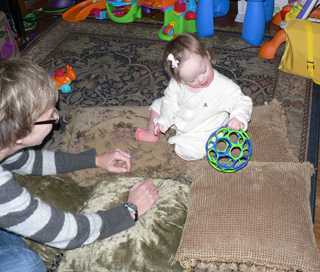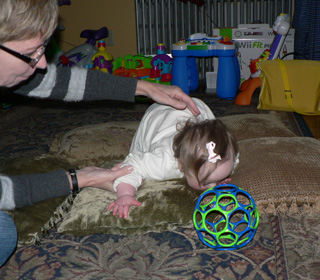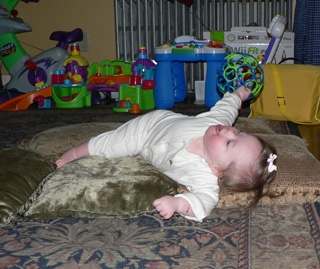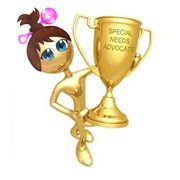Ah... potty training, a daunting task to accomplish with any child... Some people see potty training as an event, something you settle down and do one week. Not me... in our house potty training is a process that begins with elimination awareness and eventually ends two years or so later with saying bye bye to pull ups at bedtime.
During our last IFSP meeting, I mentioned that one of my goals over the next six months was to begin pre-potty training... Six shocked faces stared silently at me. Summer was 16 months old and her team was probably trying to figure out how to break it to me that she was nowhere near ready to start potty training.
Little did they know, I have been “pre-potty training” Summer since she was about six months old. I had learned some interesting things about potty training with my first few kids and I decided as each one came along to add to the “pre-potty training” repertoire all that I was noticing. I also had a friend who bravely did the EC method with her only child, and had relative success with it. I thought to myself, why not take the best of all this and see what happens.
Pre-potty training tricks
The very first step you can take, at any early age you choose, is to help your child connect elimination with a special sound. Notice how your infant child acts when he is poopin. There is likely going to be some grunting, wriggling, and a red face. Take the time to identify to your child what is happening. I sing a goofy made-up song to a warped version of the Sanford and Son theme song.... It goes something like, “A poo poo pooey, a pooey looey, a poo poo poo poo poo poo poo, a pooey looey...” Ahem, you get the idea (and yes, I do refrain in public).
If I have missed the event, I sing it when I am changing her diaper. The only time she hears this goofy song is when she is going or has gone poo. Over time, she has made the connection.
The next step is to help your baby associate going potty with a potty-chair in the bathroom. You can begin this step once your baby can sit on a chair or low bench on her own and can understand cause and effect and sequence. (An example of understanding sequence is that your child knows his routine and expects certain things to happen next. I usually start this step around 16-18 months old.)
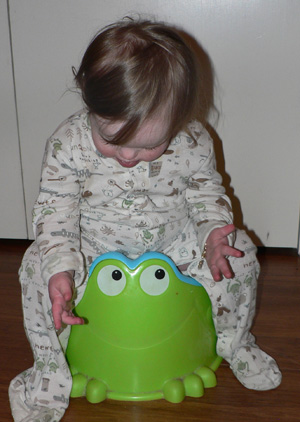 Find a sturdy, comfy potty chair to keep in your bathroom. Make the sign for bathroom and then put her on the potty (clothes, diaper, and all) when she shows that she is getting busy. Sing the goofy poop song, and imitate her grunting. Yup, you read that right. Do some face to face grunting and then tell her it is her turn. She will imitate you back and you will be happily surprised at the results.
Find a sturdy, comfy potty chair to keep in your bathroom. Make the sign for bathroom and then put her on the potty (clothes, diaper, and all) when she shows that she is getting busy. Sing the goofy poop song, and imitate her grunting. Yup, you read that right. Do some face to face grunting and then tell her it is her turn. She will imitate you back and you will be happily surprised at the results.I do not start off doing this every day or for every elimination. When we have the time, and she seems very alert and is in a good mood, I will take her into the potty and let her practice. Sometimes if I am sure she hasn’t already started going, I will let her sit diaperless and actually go in the potty.
My pre-potty training goal is to teach her body to expect to go on the potty when she needs to poo. I have given her elimination awareness, a sign to use, and practice in the position. Next year, when she is ready to start actual potty training, she’ll already have these basics ingrained.
Your Turn
Ok moms who have been there, done that... do tell. How and when did you start potty training, and what worked best for your child?
From Theory to Practice :-)
Tausha: No Way!!! That did not just happen!!

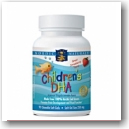 The easiest way to get it, and one of the safest, is through
The easiest way to get it, and one of the safest, is through 